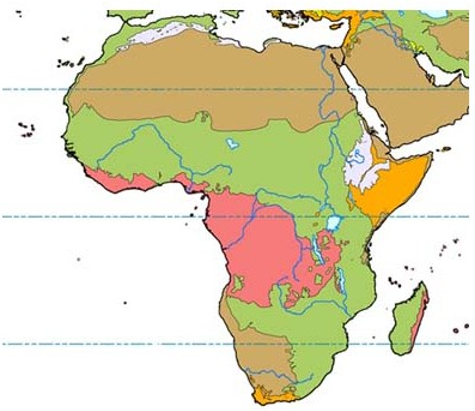Historically, world food production increased primarily by:
A) expanding the amount of land devoted to agriculture
B) improving the number of people engaged in agriculture
C) increasing the amount of money invested in agriculture
D) seizing more land from poor people
E) none of the answer choices are correct.
Answer: A
You might also like to view...
In the map below, green represents

A) subtropical scrub and woodland.
B) desert.
C) rain forest.
D) grassland.
Convective cooling cools rocks much more rapidly than heat conduction. Hydrothermal circulation represents convective cooling at ocean ridges and is well known from things like black smokes, but only occurs close to the spreading ridge axis
When geophysicists measure the geothermal gradient in areas along ridges where there is no hydrothermal activity, the thermal gradient is far below what you would predict theoretically, but near hydrothermal vents it is far more than you would predict. Why would this be? A) Organisms growing around hydrothermal vents disturb the thermal properties, insulating the surface, to make an apparent high thermal gradient. B) Most of the heat is carried away by convection as hydrothermal systems, so the average geothermal gradient away from the hydrothermal circulation is depressed. C) The thermal gradient in water represented by the hydrothermal system must be different than the rock, so it is measurement artifact. D) The measurements are incorrect because it is too hot to measure thermal gradient in molten rock.
A series of earthquakes that occurred near ________ in 1811-1812 were the most widely felt earthquakes to occur in recorded history.
A. San Francisco, California B. Charleston, South Carolina C. Attica, New York D. New Madrid, Missouri E. Plymouth, Massachusetts
Many species exhibit both exponential (________) and logistic (________) population growth characteristics.
A. K selected; r selected B. r selected; K selected